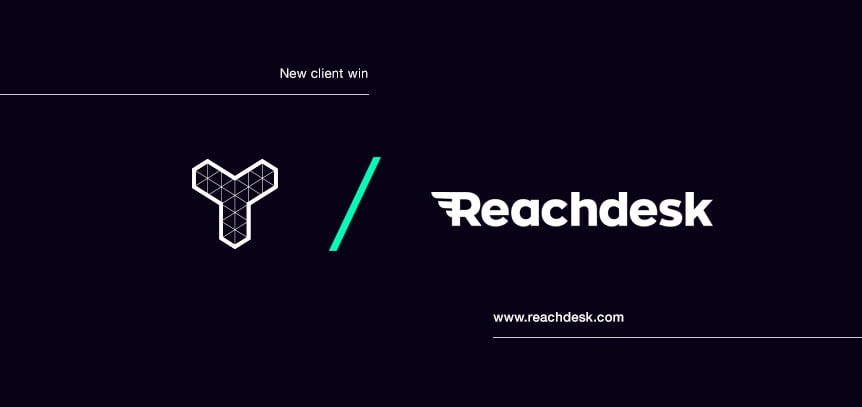
The Internet of Things: How to Adapt Your User Journey for Better Conversions
The ‘Internet of things’ means that people have more ways of accessing your site than ever before. You need to make sure that your website works properly on all devices, and that you’re optimising for every experience.

What is the Internet of things?
Imagine a world where physical objects are seamlessly integrated into the information network; where physical objects become active participants in business processes. Super cool or slightly terrifying? Who knows. But more and more objects are connecting to the internet for various purposes, and this will have a radical impact on how businesses operate.
It isn’t a new idea – it was first put forward in the late 2000s – but it’s becoming more and more relevant for businesses due to the prevalence of new ways people can access the internet. From the traditional desktop PC through to smartphones and tablets, there are now more ways to access the net than Tim Berners-Lee ever could have imagined (as well as way more cats), and people are able to remain connected wherever they are.
What does it mean for business?
Whilst it’s not likely you need to go as far as worrying about how you can combine Stumble Upon with your breakfast routine, the number of devices on which people can access your website has increased, so you do need to be aware of how your website looks on desktops, TV screens, smartphones, tablets and a range of other devices.
Each of these devices, though, has a different screen size – and your website is most likely not going to be optimised for all of them, leaving you at risk of putting off a large proportion of your market. Two-thirds of adults use devices such as tablets or smartphones to surf the web.
Oh no!
I know, it’s bad news. Fortunately for you, the answer is actually pretty simple: responsive design. By designing your website to be responsive, it is able to adapt to the size of the screen and be useable on every device.
More bad news, however: an effective website is more than just a website that looks pretty on different sized screens. You’ll also need to check to see if the the way people use your website changes based on the devices that they’re using (and here’s a clue: it most probably does).
But why should I do this?
Well. By looking at how visitor behaviour changes based on what devices your customers are using, you can reveal more information about your target audience, which in turn will help you better target your website to meet their needs. Easy.
For instance, if people using iPads are viewing different parts of the site to people using desktop PCs, then it’s possible that the sort of people who use iPads (let’s say CEOs or management) are interested in different aspects of your business than Jeff in HR who’s checking you out on his office desktop PC.
With this information in hand, you can place content tailored to Mr Senior Tablet User on the pages he is more likely to read, and increase your chance of converting him. You’ll also be able to alter the layout of the pages that are being viewed on iPad to make sure that the design is optimised for that screen size when it comes to leading the user to convert – by making senior management’s journey around your website something to write home about.
Sounds like the real deal. So how do I do it?
Finding this information out is actually pretty easy. All you need is our good old friend Google Analytics. Within Analytics you’ll find a number of features which will help you determine user behaviour for different devices… here goes:
1. Mobile Device Segment
Thankfully. Google have already done a lot of the hard work for you when it comes to working out how people use your site. There’s a handy button under the audience section cleverly labelled ‘Mobile’ which will break down the basic stats for your site for mobile users.

In the example above you can see that the site has a higher bounce rate for tablets than for the other devices, but that mobiles spend basically no time on the site at all. This gives us a point of focus for how we can improve the user experience of the site.
And if we really want, we can delve deeper into the data and look at specific device types by clicking the ‘Devices’ button on the side bar:

From this we can see that, unsurprisingly, Apple iPads are the most popular device but spend very little time on the site. This could be because the design doesn’t load very well, or the site itself isn’t keeping the user’s attention. Either way we know that to improve the user journey and increase conversions we need to find ways to engage iPad users more.
2. Visitor Flow
The Visitor Flow Segment of Analytics allows you track the journey that users take on your site. This is done by sampling, so won’t be 100% accurate, but it does give you a very good idea, of how people are using your site.
By applying the ‘Mobile and Tablet Filter’ to the visitor flow you’ll be able to see how people using different devices are interacting with the site. From here you can see how many pages get viewed before they leave the site, and you can work out where people may be losing interest (it’s not you, it’s them… maybe).
If you compare and contrast this to the general statistics you may find that people using different devices have different habits. For instance people using mobiles and tablets are more likely to be on the move, this will change their behaviour and is likely to impact on how they view your content and copy. If it’s paragraph heavy, then they may just ignore it and go somewhere else. (Like you may have done to this blog post.)
I’m still here! So what can I take away from this?
- It’s possible for people to access your site on multiple devices.
- The way people use your site can change depending on how they’ve accessed it.
- Use responsive design to build a website which is capable of adapting to any device people might use to access your site.
- Use Google Analytics to track the behaviour of people using your site on different devices so you can identify areas to target for improving the user experience.
- Hope the toasters don’t gain sentience and form Skynet.
Forget killer toasters, why not tweet what’s in your fridge? Or instead you could, you know, find out how to use Twitter for some easy peasy lead generation. Get your free eGuide now: How to generate leads from social media
Read the latest positioning trends and insights.
Tap into our brand and product positioning, storytelling, and creative expertise to inspire your next strategic move.

